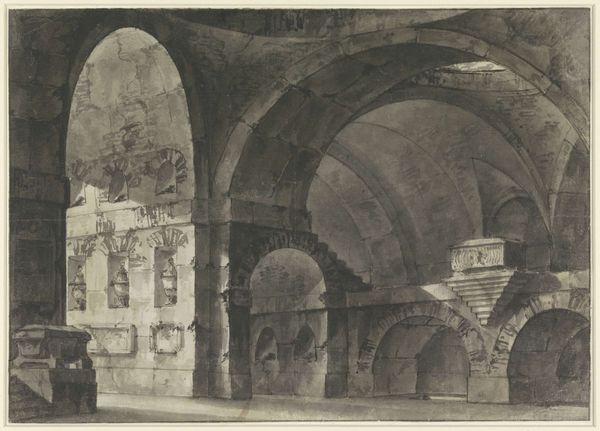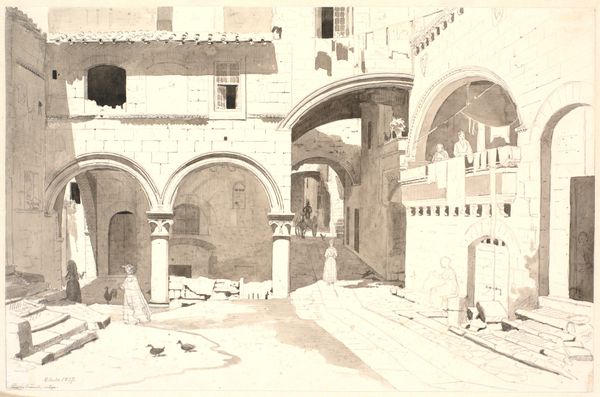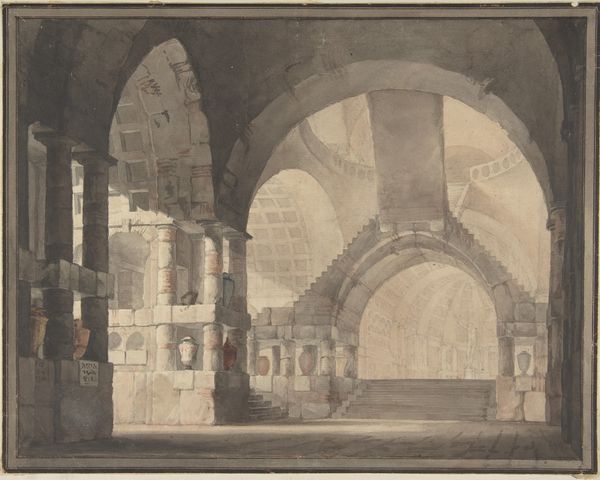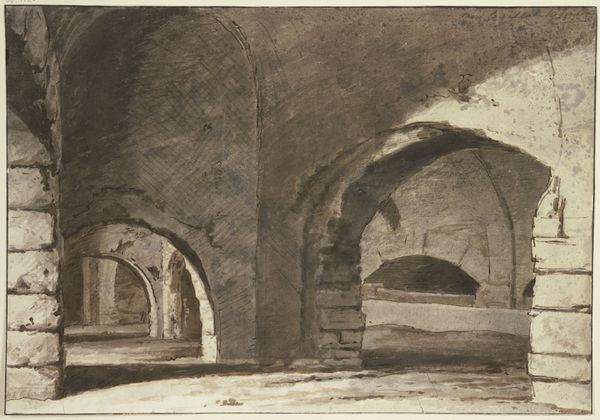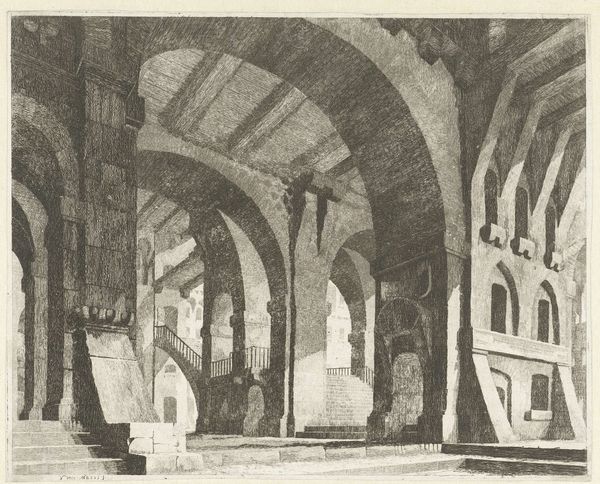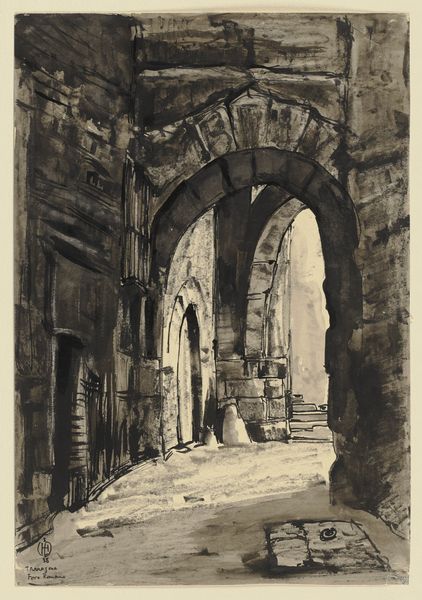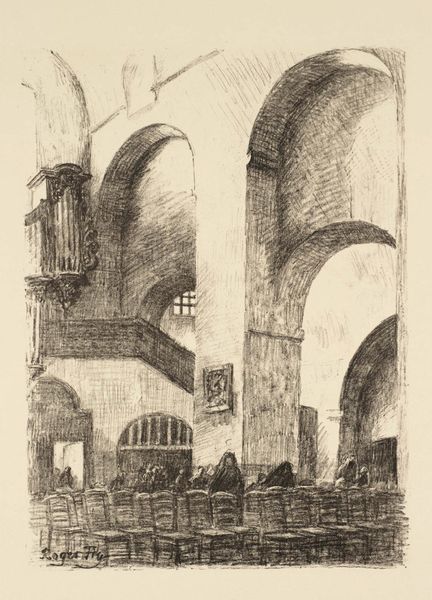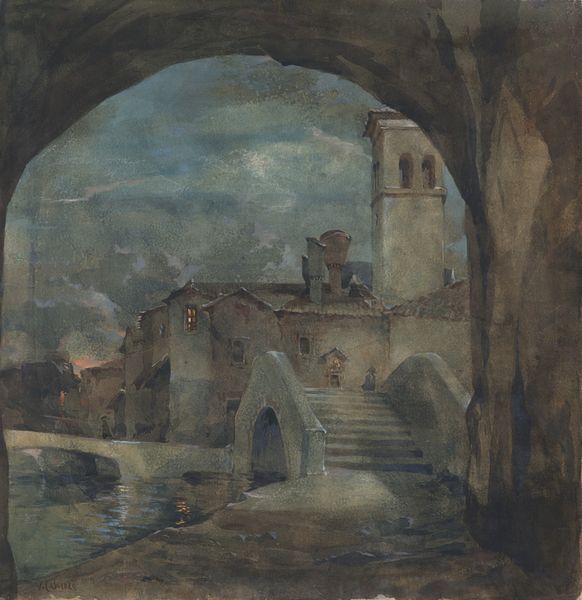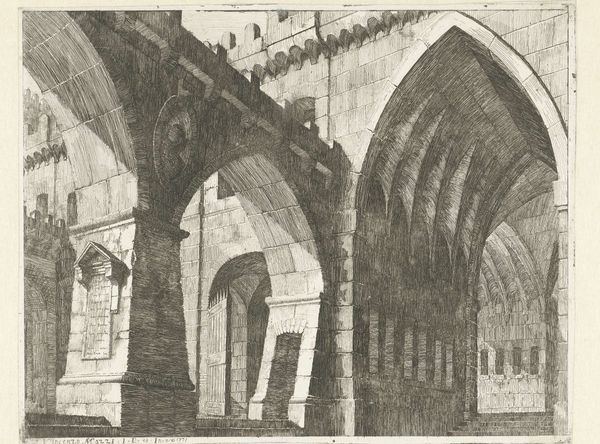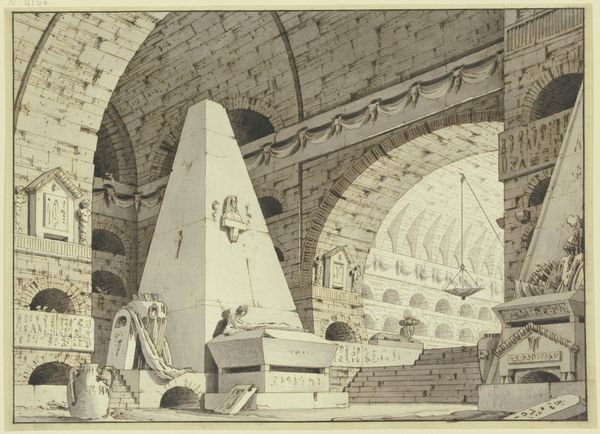
A Stage Drawing for a Vast Arched Interior c. 1803 - 1805
0:00
0:00
drawing, watercolor
#
drawing
#
neoclacissism
#
watercolor
#
cityscape
#
history-painting
#
watercolor
Dimensions: 14 3/4 x 18 13/16 in. (37.47 x 47.78 cm) (sheet)
Copyright: Public Domain
Curator: Looking at Karl Friedrich Schinkel's watercolor "A Stage Drawing for a Vast Arched Interior," created around 1803-1805 and held at the Minneapolis Institute of Art, I'm struck by its exploration of architectural grandeur and its relation to Neoclassicism. What's your immediate impression? Editor: Bleak grandeur! Like Piranesi had a baby with a Wes Anderson set design. It's coolly imposing but with this almost melancholy wash of blues and greys that really sets a mood of like, faded glory. Curator: Absolutely. The historical context is key here. Neoclassicism, arising in the 18th century, sought to revive classical ideals during a period of massive social upheaval and revolution, with architecture functioning as a medium for imposing order and virtue. Editor: Yeah, I can definitely sense the order underneath it all, but also… there's something intentionally broken about the ruins. Maybe to evoke the past as this cautionary, romanticized space? Curator: Precisely. Notice how the lion statue and the partially ruined structure blend, blurring lines between past grandeur and present decay? This interplay comments on shifting political ideologies and empire, suggesting that even the mightiest civilizations can falter. Schinkel engages directly with ideas that critique historical power dynamics, and uses architecture to explore these complex intersections of gender, identity, and cultural memory. Editor: And watercolor as a medium! It's so interesting because it lends itself to these ethereal, dreamlike qualities. Not really something that lends itself to rigidity of authority and tradition as such? The medium somehow subverts what it is intending to reflect. It's like memory itself! Curator: Exactly. The watercolor medium allows for delicate rendering, heightening the atmosphere. It's the nuance that allows him to question and unsettle. Editor: Overall, I’m left contemplating how art like this bridges the political climate and romantic musings, to give space for contemplation. I feel this longing, maybe for some lost greatness. Curator: The work serves as a meditation on history and the power relations that frame not only classical civilization, but our understanding of our own social present. It encourages a questioning of the structures that we inhabit, whether physical or conceptual.
Comments
No comments
Be the first to comment and join the conversation on the ultimate creative platform.
